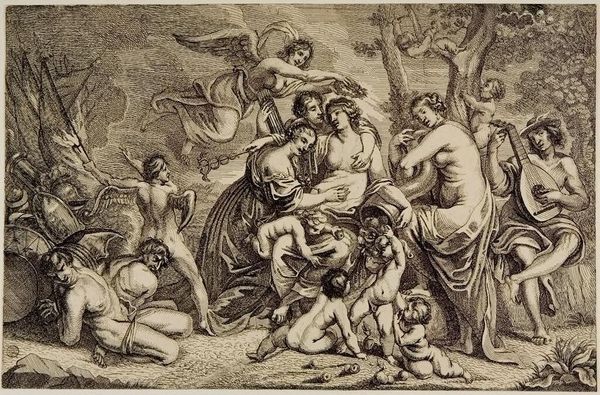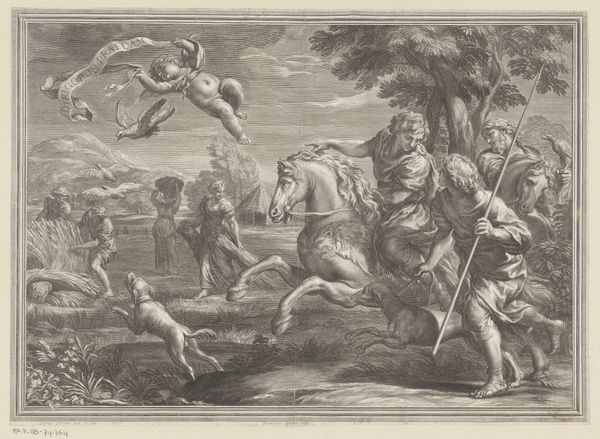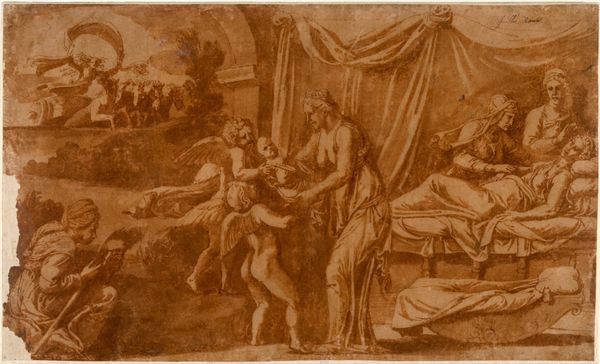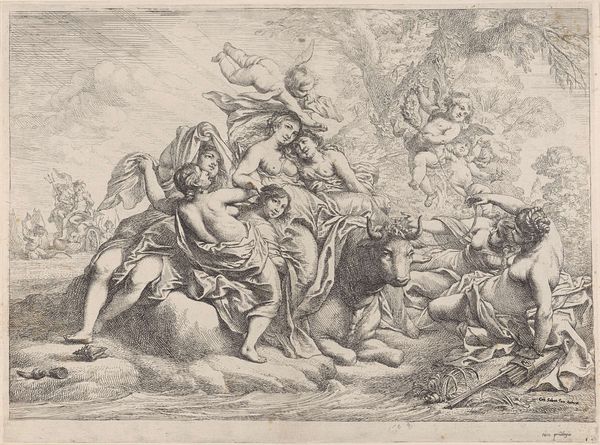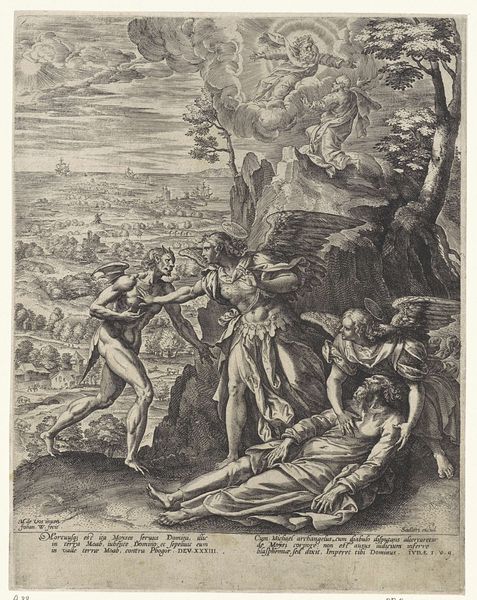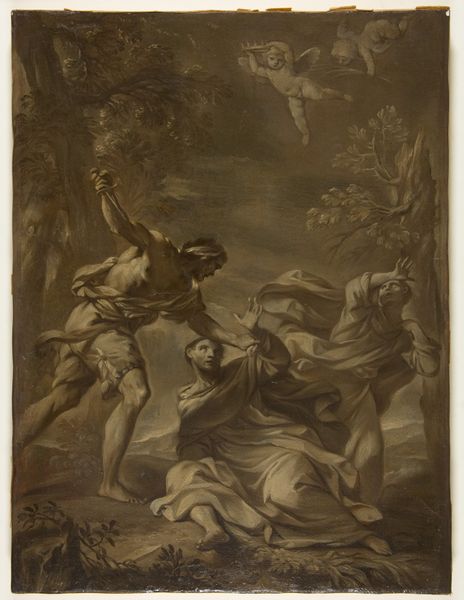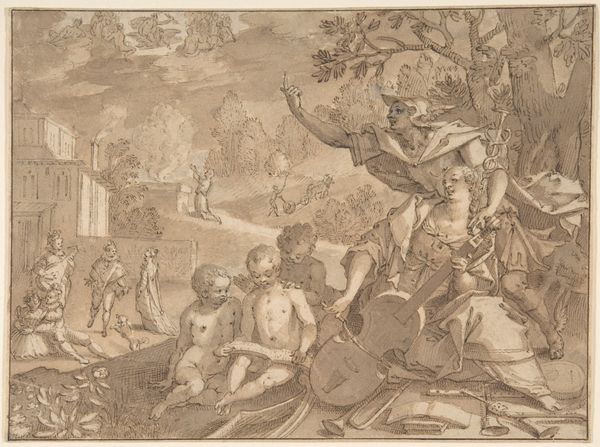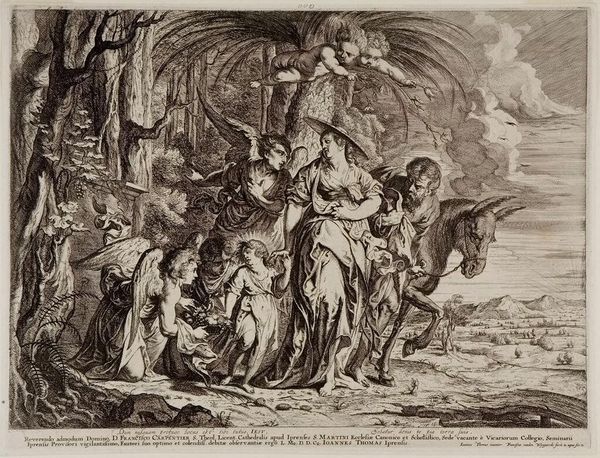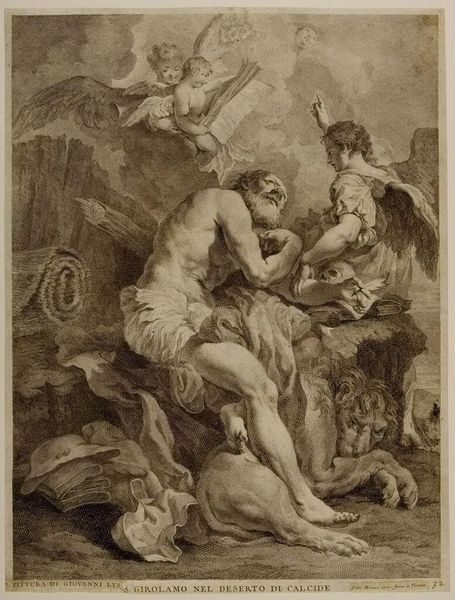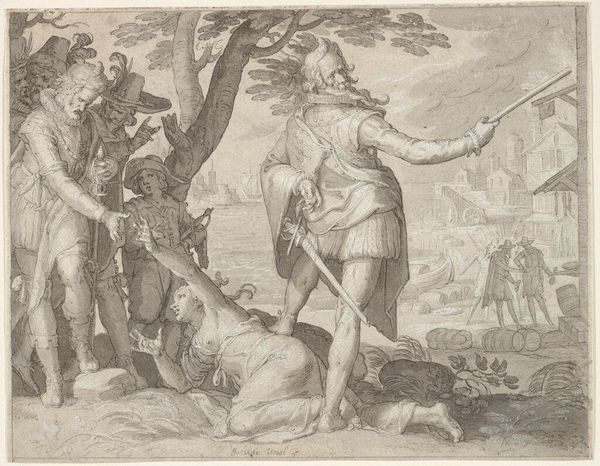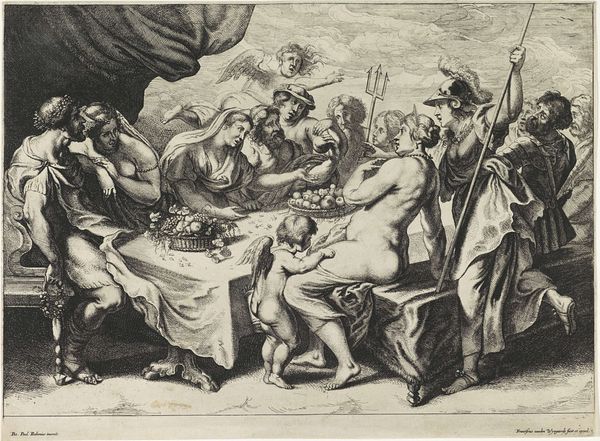
painting, oil-paint
#
allegory
#
baroque
#
the-ancients
#
painting
#
oil-paint
#
landscape
#
figuration
#
oil painting
#
mythology
#
history-painting
Copyright: Public Domain: Artvee
Curator: Gerard de Lairesse painted this dramatic scene, titled "Combat of the Centaurs and Lapiths," sometime during his career, and we’re looking at an oil-on-canvas rendition of a classic mythological battle. Editor: My immediate impression is chaos. There’s a struggle for dominance played out in a murky, unsettling landscape. It feels…violent. Curator: Indeed. Lairesse is representing a pivotal moment from Greek mythology. The wedding feast of Pirithous, king of the Lapiths, was disrupted when the centaurs, invited guests, became drunk and attempted to abduct the Lapith women. Editor: It's fascinating how this artwork reinforces established power structures by illustrating an origin story, yet also presents the brutality of enforcing these social norms on the body of a woman. Do you see the captured women’s plight reflected anywhere in the painter’s style, choice of colors or composition? Curator: Certainly. The swirling composition, typical of the Baroque, conveys the sheer disorder of the scene. Note how the lighter skin tones of the Lapith women contrast sharply with the darker, earthier tones of the centaurs. It visually underscores the violation taking place, framed by classical allusions that ultimately uphold patriarchal systems. Editor: So the painting embodies this push and pull, the classical idealism and also this acknowledgement, intended or not, of raw human urges, which were typically expressed by gender and social hierarchies? Curator: Precisely. Lairesse was deeply influenced by classical art and philosophy, a prevalent interest during his time. But he infused the classical with the dynamism and emotional intensity of the Baroque. The result is a painting that glorifies heroic combat but hints to its more complex cultural backdrop. Editor: The layering of these tensions seems a timeless trait of cultural representations. Looking closely reveals the inherent struggle to represent societal fractures while claiming this narrative, and doing it through dramatic artistry. It leaves me pondering on our tendency to idealize conflict narratives in art. Curator: I concur. It is paintings like these that become crucial nodes for deciphering how culture is both constructed and challenged within artistic depictions across generations.
Comments
No comments
Be the first to comment and join the conversation on the ultimate creative platform.

